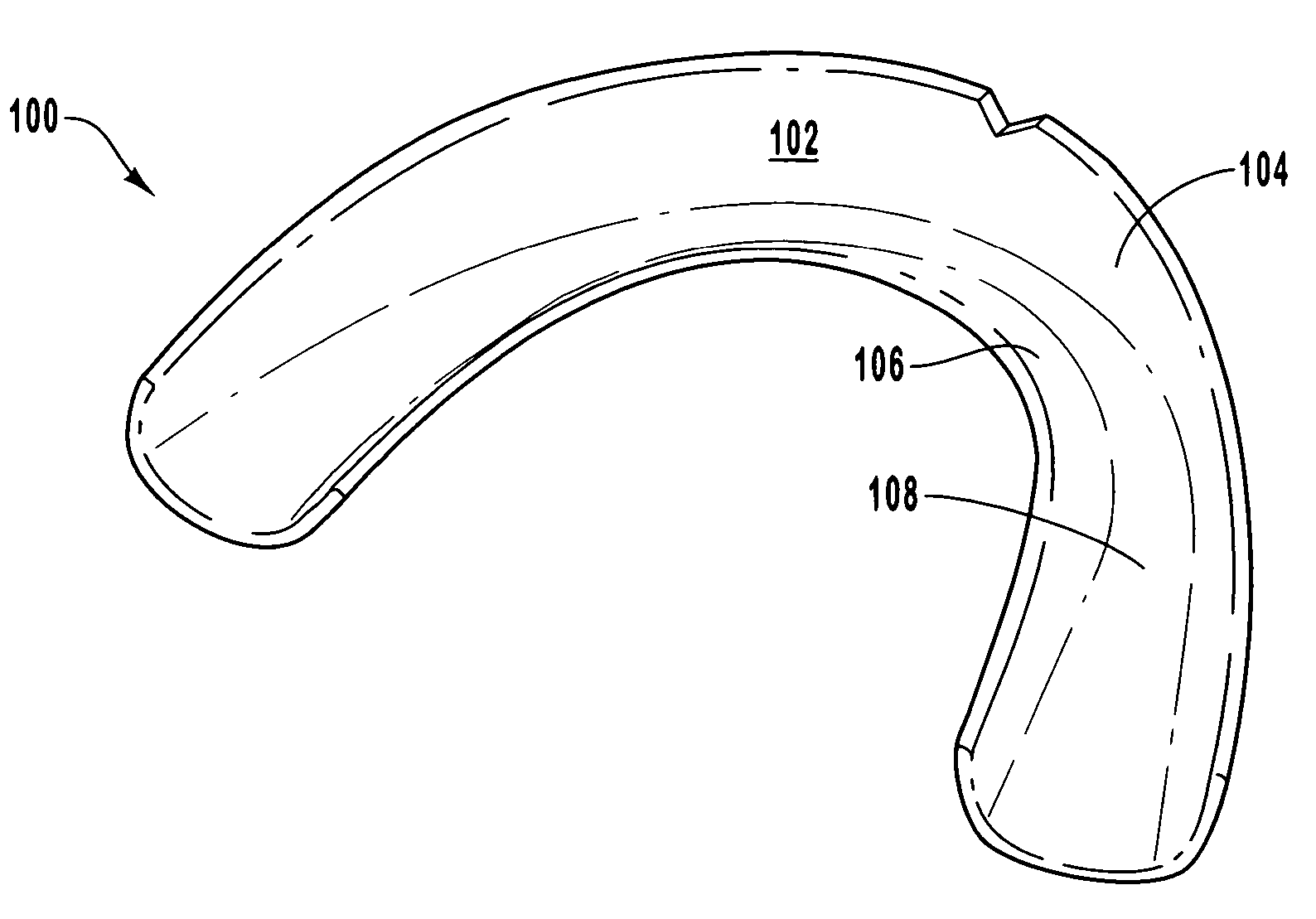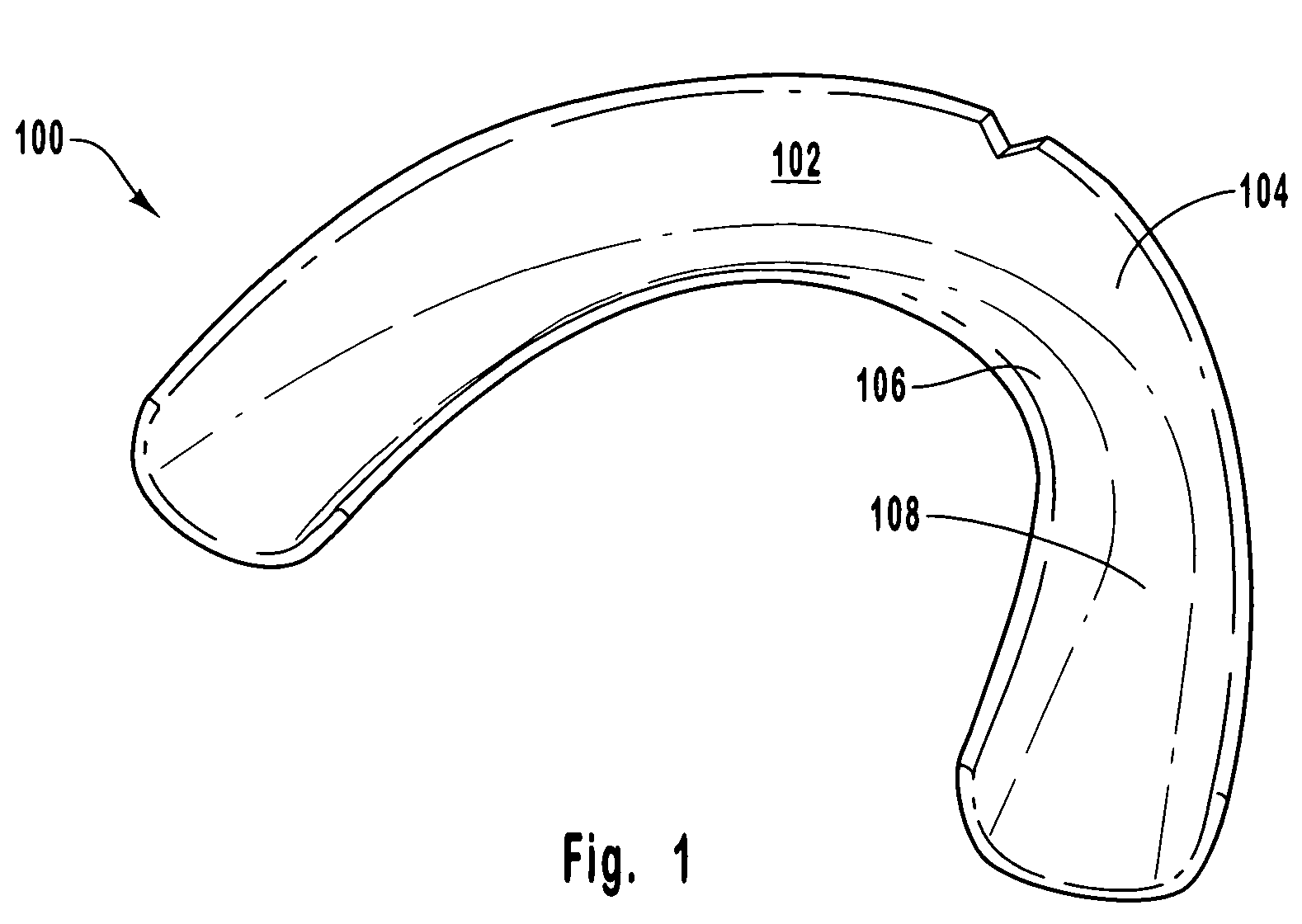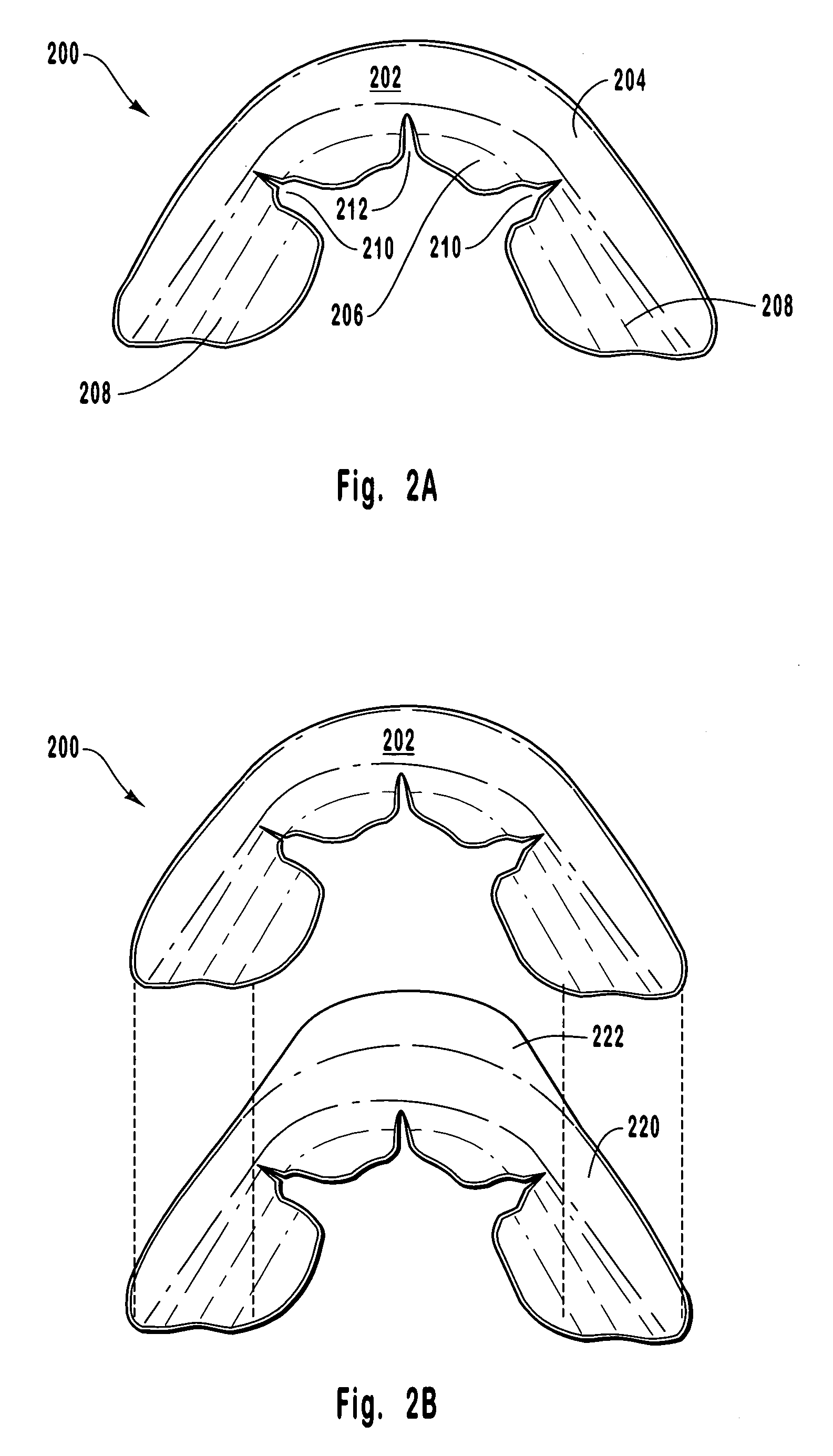Dental treatment tray comprising a plasticized resin for improved moldability and conformability
a dental treatment tray and plasticized resin technology, applied in the field of flexible dental trays, can solve the problems of significant portion of the bleaching composition not remaining on the teeth, on the bleaching composition, and remains directly exposed to the saliva of the person, and achieves the effect of high flexibility
- Summary
- Abstract
- Description
- Claims
- Application Information
AI Technical Summary
Benefits of technology
Problems solved by technology
Method used
Image
Examples
example 1
[0065]A composition for injection molding a dental treatment tray was formed from the following components:
[0066]
DuPont-Dow Engage 840150%DuPont Elvax 75025%White Mineral Oil25%
[0067]Equal weights of DuPont-Dow Engage 8401 and white mineral oil were compounded at a temperature between about 150° F. and about 400° F. for a thorough and even dispersion to create an Engage 8401 / white mineral oil mixture. Equal weights of DuPont-Dow Engage 8401 and DuPont Elvax 750 pellets were dry mixed at room temperature until the pellets were evenly dispersed to create an Engage 8401 / Elvax 750 mixture. Equal weights of the Engage 8401 / white mineral oil mixture and the Engage 8401 / Elvax 750 mixture were then mixed together at a temperature between about 200° F. and about 400° F. to form an even dispersion and yield a thermoplastic melt comprising the thermoplastic resins and plasticizer. Dental trays according to the invention were formed by injection molding the thermoplastic melt into a mold cavity...
example 2
[0068]A composition for injection molding a dental treatment tray was formed from the following components:
[0069]
DuPont-Dow Engage 840120%DuPont Elvax 75040%White Mineral Oil40%
[0070]The components were mixed together in a manner so as to form a thermoplastic melt comprising the thermoplastic resins and plasticizer. Various dental trays were injection molded from the thermoplastic melt to yield trays having thicknesses of about 0.006 inch, about 0.008 inch, and about 0.010 inch.
example 3
[0071]A composition for injection molding a dental treatment tray was formed from the following components:
[0072]
DuPont-Dow Engage 840180%DuPont Elvax 75010%White Mineral Oil10%
[0073]The components were mixed together in a manner so as to form a thermoplastic melt comprising the thermoplastic resins and plasticizer. Various dental trays were injection molded from the thermoplastic melt to yield trays having thicknesses of about 0.008 inch and about 0.010 inch.
PUM
 Login to View More
Login to View More Abstract
Description
Claims
Application Information
 Login to View More
Login to View More - R&D
- Intellectual Property
- Life Sciences
- Materials
- Tech Scout
- Unparalleled Data Quality
- Higher Quality Content
- 60% Fewer Hallucinations
Browse by: Latest US Patents, China's latest patents, Technical Efficacy Thesaurus, Application Domain, Technology Topic, Popular Technical Reports.
© 2025 PatSnap. All rights reserved.Legal|Privacy policy|Modern Slavery Act Transparency Statement|Sitemap|About US| Contact US: help@patsnap.com



